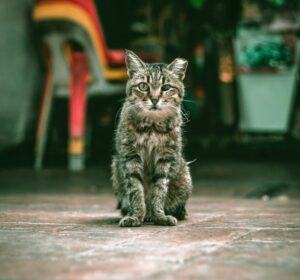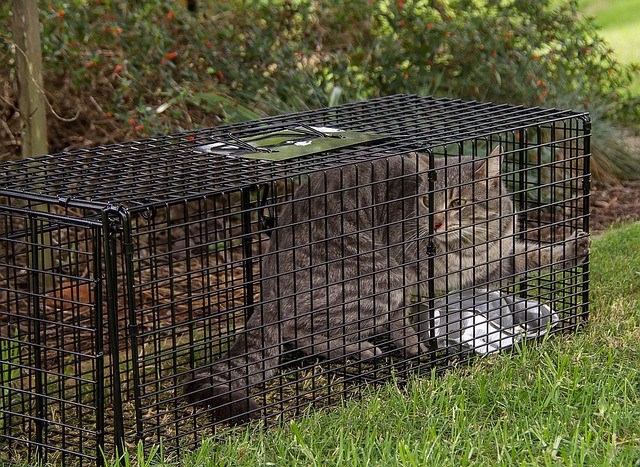
Community cats are our responsibility. They are a part of our ecosystem and have been around us for more than 10000 years now. This beautiful, mutually beneficial companionship needs your help. When you see a community cat, all you might think is to give them food and maybe keep them as pets. Well, that’s not enough and you can’t always keep them as pets.
There’s much more about community cats than that. To help them we have to know them and in this article, I’ve mentioned what community cats are and everything you can do to help them provide a better life.
What Are Community Cats?
Community cats are all the cats that are roaming and living outdoors including stray cats, feral cats, nursing cats, kittens, pregnant cats, friendly cats, altered or unaltered cats, owned or disowned cats. In a nutshell, a cat that’s roaming outdoors and is an active part of the ecosystem are community cats.
The first thought that comes to our mind on seeing a cat outdoors is to whom that cat belongs to. They can be feral cats or stray cats, however, they are community cats and you can help them differently. Let’s now understand more about feral and stray cats.
Feral Cats

Feral cats are wild cats that are not yet socialized. Many people believe that feral cats are too mean and always hiss at and bite people. But that’ not completely true. They aren’t mean, it’s just they are not used to be around humans. Also, feral cats are not determined based on their location. Meaning, they don’t have to be born and live in the jungle in order to be called feral. Community cats who are not socialized to live with humans are feral cats in simple terms.
They usually show up in your neighborhood when they’re extremely hungry. They can starve themselves and survive for many days without food. They will eat the food you put for them after you go away from them as they are so afraid of humans.
Considering that, feral cats can’t be socialized easily and shouldn’t be kept as pets. If you put out food for them at the same time every day, they will simply eat and leave. But keeping them at home is captivity for them. They will be safe but hate to be indoors and feels like their home (outdoors) has been robbed of them.
We will discuss how you can help them in the later sections.
Stray Cats
Stray cats are more friendly and approach you for food and human attention. They will eat the food you put them for. But you have to be cautious because you never know if they are feral cats.
A stray cat can be a lost pet cat, abandoned cat, or cats who are socialized with humans to some extent. Stray cats are more vocal around humans. Nevertheless, they can turn into feral cats if pet cats spend significantly more time outdoors without any human contact.
Below are some pointers for how you can help a stray cat when you spot one in your community.
- Look for any collar tag for any information about owners. A stray cat can be someone’s pet allowed to go outdoors. They roam around and visit neighborhoods for food, attention, and hunting. Try to contact the owner if there is any information available.
- If the cat is friendly and can get into a crate, take him to a veterinarian for microchip scanning.
- Email or call different shelters and veterinary offices in your area and inform them about the found cat. Maybe the owners have registered for a lost pet and it’s a match.
- Discuss the cat with your neighbors and mail carriers. Maybe they’ve been spotting cat frequently and the cat is new just to you.
- If you identify it as a lost pet, post it on your Facebook and into relevant groups. Also, post signs and free ads in newspapers.
- Create a Found pet profile on platforms like The Center for Lost Pets.
If you succeed in finding the owners of a stray cat, that’s great. Stray cats are tame enough to be kept as pets. You can find a forever home for such kitties or can adopt him yourself if you’re looking for getting a cat anytime soon.

Provide Good Veterinary Care and TNR
Completing a TNR (Trap, Neuter, and Return) program is the first and crucial step you could take to help your community cats. Community cats live in a group called a colony. Each colony has a limited number of food sources in their location. Meaning, if the overpopulation occurs, many of them would starve.
There are good resources available on how to TNR community cats. The universal sign of a spayed or neutered cat is a tipped or notched ear. If you find cats with tipped ears in your community, that indicates that the cats are altered.
A female kitten can become pregnant at the age of only four months. If community cats aren’t altered, soon there will be overwhelming numbers of cats and kittens struggling with resources and the death of newborns.
Ethan from Catlovesbest says, “You should also keep your pet cats altered because if they’re allowed to go outside on their own they can contribute to the overpopulation of community cats.” Moreover, altered cats will eliminate catfights happening for reproductive competition, yowling, and spraying.
A TNR program doesn’t only alter the cat but also includes vaccination and treatment for injuries. All in all, doing TNR is quite necessary for providing them a good life.

Volunteer For Different Community Cat Programs
We all are busy hustling every day and it is not always possible to become a permanent caretaker of community cats. Community cat programs are run on donations and don’t always have enough funds. You can donate or raise funds for such programs and can also volunteer for different community cat programs.
Here are a few pointers on how you can volunteer and can do your part:
- Volunteer different Trap and Neuter events.
- Volunteer to go a step forward in socializing feral kittens.
- Spread awareness about community cats in your neighborhood and on your social media handles.
- Donate whatever you can to different community cat programs.
- Write grant applications to the organizations and agencies helping cats and fundraise.

Provide Shelters for Community Cats
Apart from food and veterinary care, we should provide them shelter from hardy elements of weather. Providing shelter also means less trespassing in neighbors’ gardens, porches, crawl spaces, or shades for resting in a warm, dry, and comfortable place.
If you move these shelters a little bit at a time, the cat will likely follow them, and that way you can move them away from the problematic areas of your community. For example, the cats won’t try to climb on the roof of cars anymore.
There are outdoor cat houses available in the market. However, building up a shelter is easy. It requires only basic carpentry skills, cheap materials, tools, and some common sense. In fact, there are so many winter outdoor cat shelter designs available online so you won’t have to think much about the design of it.
Feed Community Cats

If you can become a permanent caretaker of them, that’s great. But you can at least feed them when you can. Also, cat food is costly and can become a significantly big portion of our monthly budget. That being said, you should feed the best you can, but should not feel guilty for not being able to feed cats the best food available on the market.
Try to feed cats at the same time every day at a dedicated feeding station. Ensure that there is no food left after cats have eaten. Put out the food that cats can eat within half an hour. The leftover food invites pests and even wild animals based on where you’re living. And that can add to neighbors’ complaints because many people living in urban areas want their surroundings free from wildlife as much as possible.
Some wild animals are nocturnal and they show up later in the night in search of food, making things even worse. Also, if you’re using disposable plates, you should put them into a bin after cats are done eating. Once empty, they scatter due to the wind making a mess. Also, don’t forget to clean the food station every day after the cats eat.
The EndNote
Community cats and barn cats are of the same species as our pet cats and they too deserve our love and care. Nevertheless, community cats can be feral as well and they shouldn’t be kept as pets. Let them enjoy their home outdoors and provide them the care they require. TNR is the most effective way you can help make community cats’ lives better.
As an individual, you can be a caretaker of your colony of cats, volunteer for TNR, spread awareness about the community or barn cats among your neighbors and on social media, feed them, donate for community cat programs, etc. Let’s make this world a better place through our collective efforts.
Author
Written and Submitted by Clara Lou from Pet Loves Best.
